#d2d1cc Color Information
In a RGB color space, hex #d2d1cc is composed of 82.4% red, 82% green and 80% blue. Whereas in a CMYK color space, it is composed of 0% cyan, 0.5% magenta, 2.9% yellow and 17.6% black. It has a hue angle of 50 degrees, a saturation of 6.2% and a lightness of 81.2%. #d2d1cc color hex could be obtained by blending #ffffff with #a5a399. Closest websafe color is: #cccccc.
-
- R 82
- G 82
- B 80
-
- C 0
- M 0
- Y 3
- K 18
● #d2d1cc color description : Grayish yellow.
#d2d1cc Color Conversion
The hexadecimal color #d2d1cc has RGB values of R:210, G:209, B:204 and CMYK values of C:0, M:0, Y:0.03, K:0.18. Its decimal value is 13816268.
| Hex triplet | d2d1cc | #d2d1cc |
|---|---|---|
| RGB Decimal | 210, 209, 204 | rgb(210,209,204) |
| RGB Percent | 82.4, 82, 80 | rgb(82.4%,82%,80%) |
| CMYK | 0, 0, 3, 18 | |
| HSL | 50°, 6.2, 81.2 | hsl(50,6.2%,81.2%) |
| HSV (or HSB) | 50°, 2.9, 82.4 | |
| Web Safe | cccccc | #cccccc |
| CIE-LAB | 83.79, -0.553, 2.588 |
|---|---|
| XYZ | 60.276, 63.662, 66.236 |
| xyY | 0.317, 0.335, 63.662 |
| CIE-LCH | 83.79, 2.647, 102.064 |
| CIE-LUV | 83.79, 0.846, 3.983 |
| Hunter-Lab | 79.789, -4.783, 6.633 |
| Binary | 11010010, 11010001, 11001100 |
Color Schemes with #d2d1cc
Alternatives to #d2d1cc
Below, you can see some colors close to #d2d1cc. Having a set of related colors can be useful if you need an inspirational alternative to your original color choice.
#d2d1cc Preview
This text has a font color of #d2d1cc.
<span style="color:#d2d1cc;">Text here</span>This paragraph has a background color of #d2d1cc.
<p style="background-color:#d2d1cc;">Content here</p>This element has a border color of #d2d1cc.
<div style="border:1px solid #d2d1cc;">Content here</div>.text {color:#d2d1cc;}.background {background-color:#d2d1cc;}.border {border:1px solid #d2d1cc;}Shades and Tints of #d2d1cc
A shade is achieved by adding black to any pure hue, while a tint is created by mixing white to any pure color. In this example, #010101 is the darkest color, while #f7f7f6 is the lightest one.
-
#010101
#010101rgb(1,1,1) -
#0c0b0a
#0c0b0argb(12,11,10) -
#161613
#161613rgb(22,22,19) -
#20201d
#20201drgb(32,32,29) -
#2b2a26
#2b2a26rgb(43,42,38) -
#35342f
#35342frgb(53,52,47) -
#403e38
#403e38rgb(64,62,56) -
#4a4941
#4a4941rgb(74,73,65) -
#54534b
#54534brgb(84,83,75) -
#5f5d54
#5f5d54rgb(95,93,84) -
#69675d
#69675drgb(105,103,93) -
#747166
#747166rgb(116,113,102) -
#7e7c6f
#7e7c6frgb(126,124,111)
-
#888679
#888679rgb(136,134,121) -
#928f83
#928f83rgb(146,143,131) -
#9b998d
#9b998drgb(155,153,141) -
#a4a298
#a4a298rgb(164,162,152) -
#adaba2
#adaba2rgb(173,171,162) -
#b6b5ad
#b6b5adrgb(182,181,173) -
#c0beb7
#c0beb7rgb(192,190,183) -
#c9c8c2
#c9c8c2rgb(201,200,194) -
#d2d1cc
#d2d1ccrgb(210,209,204) -
#dbdad6
#dbdad6rgb(219,218,214) -
#e4e4e1
#e4e4e1rgb(228,228,225) -
#eeedeb
#eeedebrgb(238,237,235) -
#f7f7f6
#f7f7f6rgb(247,247,246)
Tones of #d2d1cc
A tone is produced by adding gray to any pure hue. In this case, #d2d1cc is the less saturated color, while #feefa0 is the most saturated one.
-
#d2d1cc
#d2d1ccrgb(210,209,204) -
#d6d3c8
#d6d3c8rgb(214,211,200) -
#d9d6c5
#d9d6c5rgb(217,214,197) -
#ddd8c1
#ddd8c1rgb(221,216,193) -
#e1dbbd
#e1dbbdrgb(225,219,189) -
#e4ddba
#e4ddbargb(228,221,186) -
#e8e0b6
#e8e0b6rgb(232,224,182) -
#ece2b2
#ece2b2rgb(236,226,178) -
#f0e5ae
#f0e5aergb(240,229,174) -
#f3e7ab
#f3e7abrgb(243,231,171) -
#f7eaa7
#f7eaa7rgb(247,234,167) -
#fbeca3
#fbeca3rgb(251,236,163) -
#feefa0
#feefa0rgb(254,239,160)
Color Blindness Simulator
Below, you can see how #d2d1cc is perceived by people affected by a color vision deficiency. This can be useful if you need to ensure your color combinations are accessible to color-blind users.
